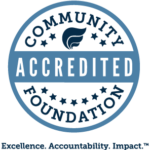National Mentoring Month: How mentoring can bridge the achievement and opportunity gaps in Fairfield County
Jan 14, 2021
National Mentoring Month, observed each January, recognizes the positive impact mentoring programs have on the lives of young people and raises awareness about their importance in communities across the country.
Many of us can look back on our formative years and recall a time when a family member, friend, or teacher helped guide us. Research shows that consistent relationships with caring adults are vital to a young person’s development, providing support as they navigate life’s challenges and work toward meeting their personal, educational, or professional goals. The Foundation contributes to this important work by funding organizations that offer mentoring services as core components of their programs. The Greenwich Alliance for Education and Stamford Public Education Foundation are great examples of organizations in which the Foundation invests.
Yet, as reported by MENTOR: The National Mentoring Partnership, one in three young people living in the United States don’t have access to an adult mentor of any kind. More than half of those fall into an at-risk category, making them “less likely to graduate high school, go on to college, and lead healthy and productive lives.”1
Everyone who has had success in their life can attribute it to having a mentor at some point in their development. For many students, that doesn’t always happen organically. Investments in structured mentoring programs allow us to address some of the inequities that exist in the opportunity to have a caring adult in their life.
Matthew Quinones, Chief Executive Officer, Stamford Public Education Foundation
There is a strong correlation between socioeconomic status and academic performance 2, so it is not surprising that in Fairfield County, where the income gap is among the highest in the country, significant achievement and opportunity gaps exist within our public schools. The Fairfield County Community Wellbeing Index 2019 3 reports that there are disparities in the rates of chronic absenteeism and school discipline in Fairfield County public schools, two factors which contribute to academic success. In addition, only 58% of Fairfield County students hold a college degree six years after graduating from a public high school.4

Mentoring has demonstrated a long list of benefits for youth, including increased high school graduation rates, lower dropout rates, improved academic performance, and decreased absenteeism, as well as other behavioral and emotional improvements.5 According to mentoring.org, young adults with mentors are “52% more likely to attend school regularly and 55% more likely to attend college.” They are also “81% more likely to participate regularly in sports or extracurricular activities” and less likely to engage in illegal drug or alcohol use.
The Greenwich Alliance for Education has “dedicated $3 million to funding innovation, expanding opportunities, and inspiring educators” since it was founded in 2006. Its funding supports Advancement Via Individual Determination (AVID), a program that addresses the achievement and opportunity gaps in Greenwich Public Schools by preparing students to enroll in college. AVID students are paired with a mentor during their junior or senior year of high school and, ideally, will sustain that relationship through at least two years of college.

“Navigating college is challenging for many,” says Julie Faryniarz, Executive Director for the Alliance, “and since most of the AVID students are first generation college students, they may not have parents who are familiar with the complexities inherent in these institutions.” Mentors can help address logistical or financial issues that sometimes arise during the first two years of college when dropout rates are highest, providing necessary support that ensures students stay on their path toward a promising future.

Joanne, a mentor with the Alliance, met Brian in 2015 when he was a senior at Greenwich High School and the two “became friends right away.” Brian recently graduated from the University of West Virginia and is leveraging his relationship with Joanne and the Alliance to help him build a resume and network with professionals in his chosen field of communications.
The Stamford Public Education Foundation (SPEF) provides four mentoring programs that address achievement and opportunity gaps in the community. At the elementary schools, group mentoring focuses on engaging students in “service learning” to teach them the importance of community service. All six middle schools provide one-on-one weekly mentoring for social and/or academic assistance. High school students are paired with a mentor outside of regular school hours to build “confidence, self-esteem and work force readiness.” SPEF also works with local corporate partners to provide mentor support through its Early College Studies (ECS) program, which gives students an “opportunity to graduate high school and earn an associate degree in a technology-based field in 4-6 years.”
Face-to-face mentoring has been a challenge since the pandemic, says SPEF CEO Matthew Quinones, but the organization has found ways to offer support as distance learning presents new inequities for some students. SPEF is now “making connections with a specific purpose,” says Quinones, “rather than the holistic support that [traditional] mentoring brings.” Despite the shift, Quinones says that “when you pair a caring adult with a student, there is a natural mentor/mentee relationship that develops.”
It is precisely these types of relationships that mentoring programs strive to create: relationships that not only shape the lives of participants during their youth, but well into adulthood. “When a student goes through the program and comes back to become a mentor themselves,” says Quinones, “it’s one of the most powerful measures of success to see.”
RESOURCES:
- https://files.eric.ed.gov/fulltext/ED558065.pdf
- https://www.gse.harvard.edu/news/uk/19/12/tracking-achievement-and-inequality-us-schools
- DataHaven’s Fairfield County Community Wellbeing Index 2019 was co-funded by FCCF and helps inform its grantmaking and strategic planning so that they align with community needs.
- https://www.ctdatahaven.org/sites/ctdatahaven/files/DataHaven_FairfieldCounty_Community_Wellbeing_Index_2019.pdf
- https://youth.gov/youth-topics/mentoring/benefits-mentoring-young-people

